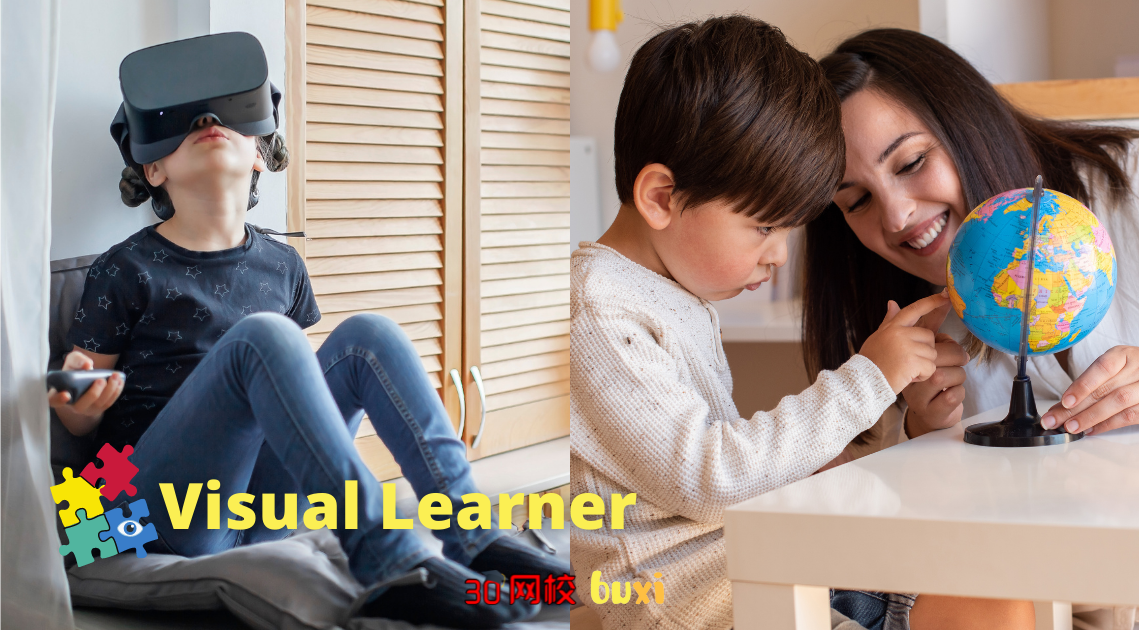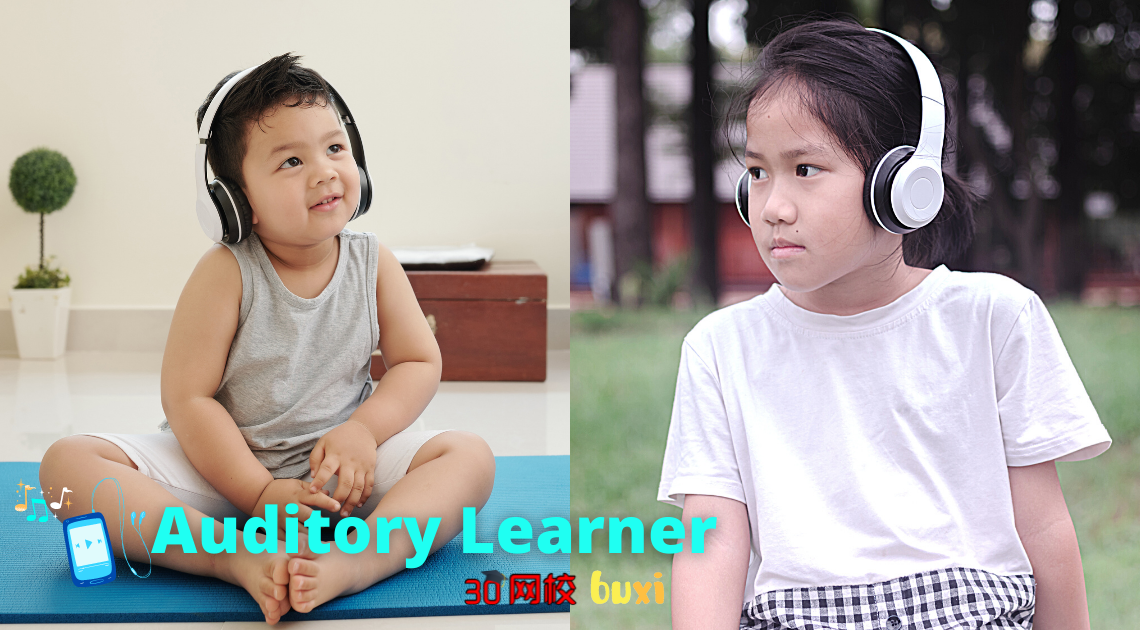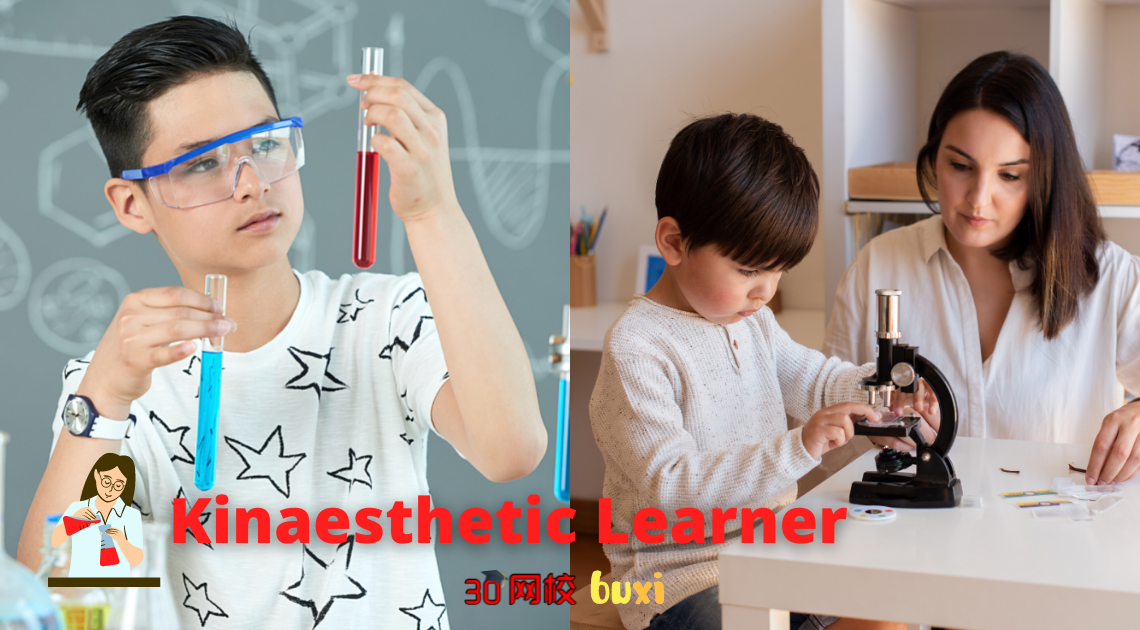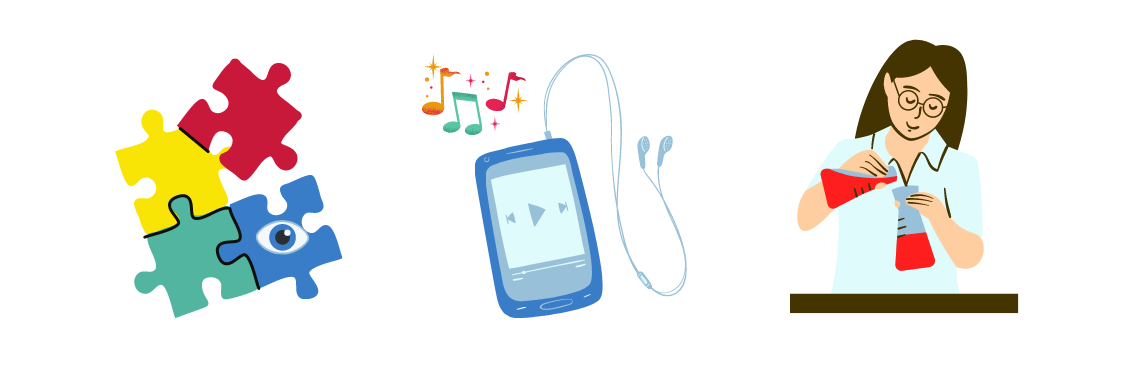When learning something new, how does your child understand them? Some people like to observe with their eyes, some like to listen through their ears, and some prefer to touch and feel things with their hands.
If you want your child to learn effectively, you must first understand what type of learning style your child belongs to. By understanding children’s learning styles, parents can approach teaching and support children’s learning aptitude using appropriate methods. This is important because not only it helps children to improve their learning efficiency, using the right teaching method keeps children’s interest to keep on learning.
Do you know which style of learning your child belongs to? If not, you can refer to the following information to help you identify your child’s learning style.
First, let’s define each learning style quickly.

Visual learner
A visual learner retains image information the best. This is done by reading or looking at pictures. Often, they need a visually stimulating medium to learn, otherwise, they may get bored or find it hard to understand. Visual learners rely on puzzling small pieces of information together to form a bigger picture for memorizing. Hence, mind-mapping, tables, infographics are good learning mediums for visual learners. They really appreciate information being well-presented, informative, and visually captivating. Often, visual learners don’t enjoy the physical activity (such as role-playing or public speaking) as much as the other learning type and may come off as rigid. They need to see how things are done in order to understand. When a visual learner plays game, they are best at puzzles, word memory and image memory.

Auditory learner
An auditory learner retains voice or sound information the best. This is done by listening or speaking it out loud. Often, they prefer to be “told” how to do things, and then they recite the main points out loud to memorize. Auditory learners notice changes in tone and speed of voice and use this to help with memory. They really appreciate good speakers. Often, an auditory learner is talented in music and may concentrate better with soft music playing in the background. When an auditory learner plays game, they are best at solving crossword, scrabbles, debating, rehearsing, sound memory or public speaking.

Kinaesthetic learner
Kinaesthetic learners retain “muscle memory” information the best. This is done by physically doing things on a hands-on approach. Often, they need to “do it” or “try-and-error” rather than listening or watching other people do it. They get bored for not taking action into their hands! They pay attention to hand gestures and body language and use this to help with memory. Stereotypically, they are good in hands-on and try-an-error subjects such as science and math. Unlike visual learners, kinaesthetic learners prefer to demonstrate how to do something rather than being shown the demonstration. When kinaesthetic learner plays game, they are best at sports, experiments or acting.
Comparison
| Type of learner | Visual learner | Auditory learner | Kinaesthetic learner |
| Meaning | Rely on visual stimuli (colors, tables, charts, shapes) to learn. | Rely on auditory stimuli (speaking, listening) to learn. | Rely on touch stimuli (body movements, motor memory) to learn. |
| Traits |
-Learn through text, pictures, charts, videos, shapes, colors, etc. -Like to read, write, draw, use many colors (using visuals to see the words). -Easily remember pictures. -In class, takes class seriously, follows the teacher and syllabus closely. -Behaves less flexible or rigid, as they are not interested in physical activities. -When expressing understanding, they may say “I see.” – Best at puzzles, word memory and image memory. |
-Learn through discussion, songs, spoken words, etc. -Like to listen to stories, lecture information, debate, and discuss. -Good at speech. -In class, focus only on the teacher’s explanation and create a summary. -Does not like a noisy environment when learning as they will get distracted easily. -When expressing understanding, they may say “I understood” or “I remembered.” -Best at solving crossword, scrabbles, debating, rehearsing, sound memory or public speaking. |
-Learn through hands-on, movement, try-and-error approach. -Like role-playing games, presentations, and field trips. -Good at imitating, modeling, and rehearsal. -Often will find them using body gestures (hand movement, facial expression) to express inner thoughts. -Inattention, fidgeting, unable to sit still for long because they get bored easily. -When expressing understanding, they may say “I got it.” – Best at sports, experiments or acting. |
| Example: When an instructional video plays, | The visual learners watch the instruction intently, memorizing how it is done, and probably read the subtitle. | Audio learners focus on the spoken instruction of the video and pay little attention to what is going on in the video. | Kinaesthetic learners “do” the step-by-step instruction shown in the video, their muscle’s memory feels and memorizes the actions, and is tuned out by the spoken instructions. |
Parents must know that children may not only belong to one type of learning, they may belong to a mixed learning type, such as a combination of visual and kinaesthetic types.
The type of children’s learning style may also change with age and development. Therefore, parents need to pay attention to the changes in their children and adapt with suitable learning methods to help their children learn according to the specific situation.
So how to teach children different learning types? Here are some tips to help you shed some ideas!

Tips for each learning style
| Type | Visual learner | Auditory learner | Kinaesthetic learner |
| Tips |
-Use pictures, diagrams, videos, tables, to assist teaching. Make small cards and sticky notes. -Draw key points on the book, use different colored pens, lines, or diagrams. -Prepare different types of books for reading. |
-Engage in discussion and debates. -Prepare listening materials (for example audiobook). -Use musical instruments as auxiliary teaching. -Turn the teaching content into audio and listen to it repeatedly. -Allow the child to recite the learning content repeatedly. |
-Go to exhibitions and field trips. -Prepare learning activities or games. -Let them demonstrate or present what they learn. -Engage in role-playing. -Use models, Lego, or handicraft to teach. -Study break is important for kinesthetic learners. |
| Suitable learning medium | Reading, infographics, mind maps, tables, diagrams, and using sticky notes, colored pens, or highlighters. | Music, lectures, recorded voice, reading out loud, debates, discussion, and audiobook. | Going to exhibitions, play games, presentation, role-play or modeling, rehearsal, arts, and hands-on. |
All in all, there is no right, wrong, better, or worse learning style. Most children usually have a combination of all learning styles characteristics, but some are more prominent. All in all, take advantage of what is best for you! As the saying goes, study smart not hard!
